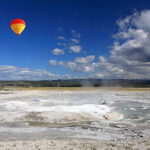If you’re searching for what Lucipara is, the answer is both strikingly simple and deeply layered: Lucipara refers to a remote cluster of small Indonesian islands—uninhabited, largely untouched by modern development, and brimming with marine biodiversity. These coral-fringed islands, officially part of the Maluku province, lie in the Banda Sea. Though absent from most mainstream travel itineraries and scientific literature, Lucipara has captured the imagination of explorers, conservationists, and underwater adventurers alike.
In an era when over-tourism has dulled the mystique of many natural sanctuaries, Lucipara stands out as a rare place where nature still speaks uninterrupted. The area’s isolation, geological positioning, and unique ecological profile make it one of Southeast Asia’s least disturbed marine regions. But what is Lucipara, really—geographically, biologically, and historically? And why should it matter to scientists, divers, and even geopolitical analysts?
This article offers a deep dive into Lucipara, structured for both the curious reader and the informed seeker. Whether you’re a marine biologist, a curious traveler, or an environmental policy enthusiast, understanding Lucipara means engaging with an ecosystem on the brink of discovery—or perhaps, exploitation.
Where is Lucipara?
Lucipara consists of several small, uninhabited coral islands located in the Banda Sea, roughly equidistant from the Banda Islands and Sulawesi. These islands are so remote they are often marked on maritime charts but rarely mentioned in guidebooks or national geographic indexes. Their precise coordinates situate them in the heart of the Coral Triangle, a region known as the global center of marine biodiversity.
Being part of Indonesia’s Maluku province places Lucipara within an administrative framework that often lacks infrastructure. The nearest human settlements lie hundreds of kilometers away, and access typically requires chartered boats, experienced navigators, and often, official permissions.
The Ecological Significance of Lucipara
What makes Lucipara more than just a dot on the map is its undisturbed marine habitat. The islands lie in waters teeming with coral reefs, migratory pelagic species, and reef fish whose populations elsewhere have been declining due to overfishing and climate change.
Key Ecological Features of Lucipara:
| Feature | Description |
|---|---|
| Coral Reef Coverage | High-density hard and soft coral formations |
| Endemic Fish Species | Several, likely unrecorded, due to isolation |
| Migratory Marine Life | Tuna, sharks, dolphins, and occasional whales |
| Seabird Nesting Sites | Observed on upper parts of uninhabited islands |
| Mangrove Ecosystems | Absent due to geological structure |
| Terrestrial Biodiversity | Minimal, no large mammals, few bird species |
Lucipara represents a rare kind of ecological time capsule, one that gives scientists a glimpse into what marine ecosystems might have looked like before the widespread human impact of the last century. These islands are effectively a living laboratory, though one that remains almost entirely unstudied.
Lucipara’s Place in Marine Conservation
Despite being off the grid, Lucipara occupies a critical location within the Coral Triangle—a marine region that includes the waters of Indonesia, the Philippines, Papua New Guinea, Timor-Leste, Solomon Islands, and Malaysia. This triangle is known to house 76% of the world’s coral species and over 2,000 species of reef fish.
Lucipara’s untouched reefs serve as a control variable in regional conservation efforts. In theory, their isolation allows them to operate as biological baselines, helping scientists measure the impacts of human activity in more disturbed nearby zones.
There is increasing academic and governmental interest in proposing Lucipara as part of a Marine Protected Area (MPA). However, logistical hurdles—like governance coordination, security enforcement, and access control—remain significant.
Historical Mentions and Maritime Relevance
Though today relatively obscure, Lucipara has appeared in several 18th and 19th-century naval logs and maritime charts. European sailors, particularly Dutch and British merchants, noted the islands primarily as navigational hazards—reefs and shallows to avoid when traveling between the Spice Islands and the Celebes.
One of the more fascinating historical anecdotes involves the sighting of Lucipara by spice traders during monsoon transitions, when the sea lanes shifted. While no significant settlements or colonial posts were ever established, Lucipara’s existence was well-known to navigators.
Modern-day commercial shipping still passes within 100 nautical miles of the islands, underscoring their strategic positioning in Southeast Asian maritime geography.
Lucipara as a Diving Frontier
Among the niche global diving community, whispers about Lucipara have begun circulating in recent years. A handful of liveaboard dive boats operating in the Banda Sea occasionally schedule stops at the islands, treating them as elite-tier sites for advanced divers.
Diving Highlights at Lucipara:
| Dive Site Name | Description |
|---|---|
| The Southern Wall | A deep drop-off teeming with pelagic species |
| Coral Gardens | Shallow reefs with high coral cover and biodiversity |
| Shark Channel | Known for frequent reef and hammerhead shark sightings |
| Ghost Plateau | An underwater ridge, home to rare invertebrates |
| Blue Abyss | A vertical descent into deep, open waters |
The clarity of the water, often with visibility exceeding 40 meters, and the absence of other human activity, creates a diving experience that’s increasingly rare in today’s crowded marine tourism sector. While access remains complicated, those who make the trip often describe it as a career-defining expedition.
Geopolitical and Environmental Threats
Lucipara’s remoteness does not guarantee its safety. Illegal fishing vessels, including foreign-operated trawlers and cyanide fishers, have been reported in adjacent waters. Satellite monitoring has occasionally picked up unauthorized maritime activity, which underscores the lack of real-time enforcement capacity.
Indonesia’s central government, while aware of these challenges, has traditionally focused on higher-profile areas like Raja Ampat or Komodo. However, Lucipara’s strategic location could prompt future geopolitical interest—particularly given the increasing global emphasis on preserving marine biodiversity and regulating international waters.
Climate change presents a more diffuse, existential threat. Rising ocean temperatures, acidification, and coral bleaching have already affected other islands in the Banda Sea. Though Lucipara’s isolation might delay some effects, it’s no sanctuary from global shifts.
Indigenous Knowledge and Cultural Associations
Because Lucipara lacks a resident human population, it has no known indigenous heritage directly tied to the islands. However, oral histories from coastal Maluku communities occasionally reference Lucipara as “ghost islands”—places where spirits rest or where navigation required spiritual rituals.
Fishermen from the nearest inhabited islands occasionally approach Lucipara for seasonal fishing, but it is done with care and often accompanied by traditional blessings. This low-level human interaction underscores a cultural attitude of reverence and caution, rather than exploitation.
Scientific Opportunities and Barriers
Lucipara represents a blank canvas for marine science. Very few peer-reviewed studies reference it, and none have offered comprehensive biodiversity assessments or coral health evaluations.
The barriers to scientific exploration are primarily logistical: distance, access permits, and funding. But the potential rewards are immense. Studying Lucipara could provide:
- New species discoveries (fish, coral, crustaceans)
- Baseline data for reef resilience modeling
- Insights into coral spawning cycles in isolated systems
- Climate adaptation patterns in a low-human-impact zone
Partnerships between universities, NGOs, and the Indonesian government could pave the way for responsible exploration and eventual protection.
Sustainable Futures: What Lies Ahead for Lucipara?
Lucipara is at a crossroads. Its seclusion offers protection, but also makes it vulnerable to invisible threats. Its ecological purity is valuable, but risks being overlooked in broader conservation agendas.
A forward-looking strategy for Lucipara could involve:
- Designating the Area a Marine Protected Zone: Using satellite surveillance and minimal on-site enforcement, similar to models used in the Pacific Remote Islands.
- Limited Eco-Tourism Licenses: Issued to vetted dive operators with strict carrying capacity rules.
- Inclusion in Global Research Networks: Positioning Lucipara as part of larger climate resilience monitoring programs.
- Community Partnership Models: Engaging Maluku fishing communities in protection and stewardship roles.
The key will be finding a balance between protecting the island chain and allowing limited, responsible access for scientific and eco-tourism purposes.
Final Reflections: Why Lucipara Matters Now
In a world increasingly defined by environmental degradation, Lucipara remains a rare symbol of the unspoiled. It’s not just a dot on the map or a diver’s fantasy. It is a mirror—reflecting both what has been lost elsewhere and what might still be preserved here.
Its value lies not just in its coral or fish, but in its status as one of the last places where ecological rhythms proceed without human interference. Lucipara is not only a scientific opportunity—it is a moral one.
Should we act now, we have the rare chance to protect Lucipara before it requires saving. That, in itself, is a reason for attention.
FAQs
1. What is Lucipara, and where is it located?
Lucipara refers to a small, remote group of uninhabited islands in the Banda Sea, part of Indonesia’s Maluku province. These coral-fringed islands lie far from human settlement and are known for their exceptional marine biodiversity and isolation.
2. Why is Lucipara important for marine conservation?
Lucipara offers a rare example of a minimally disturbed marine ecosystem. Its reefs are among the healthiest in Southeast Asia, making the islands valuable as biological baselines for coral research, biodiversity studies, and climate impact assessments.
3. Can tourists visit Lucipara?
Yes, but access is extremely limited. A few specialized liveaboard diving vessels occasionally visit Lucipara as part of longer Banda Sea expeditions. Independent travel is not feasible without proper permits, experienced crews, and long-range navigation planning.
4. Are there any threats to Lucipara’s ecosystem?
Despite its remoteness, Lucipara faces threats from illegal fishing, climate change, and lack of formal protection. Without monitoring or enforcement, activities like trawling and coral extraction could irreversibly damage the ecosystem.
5. Has Lucipara been scientifically studied?
Very little formal research has been conducted on Lucipara due to its inaccessibility. However, it is increasingly recognized as a critical site for future marine science, offering opportunities for biodiversity surveys and coral resilience studies.











